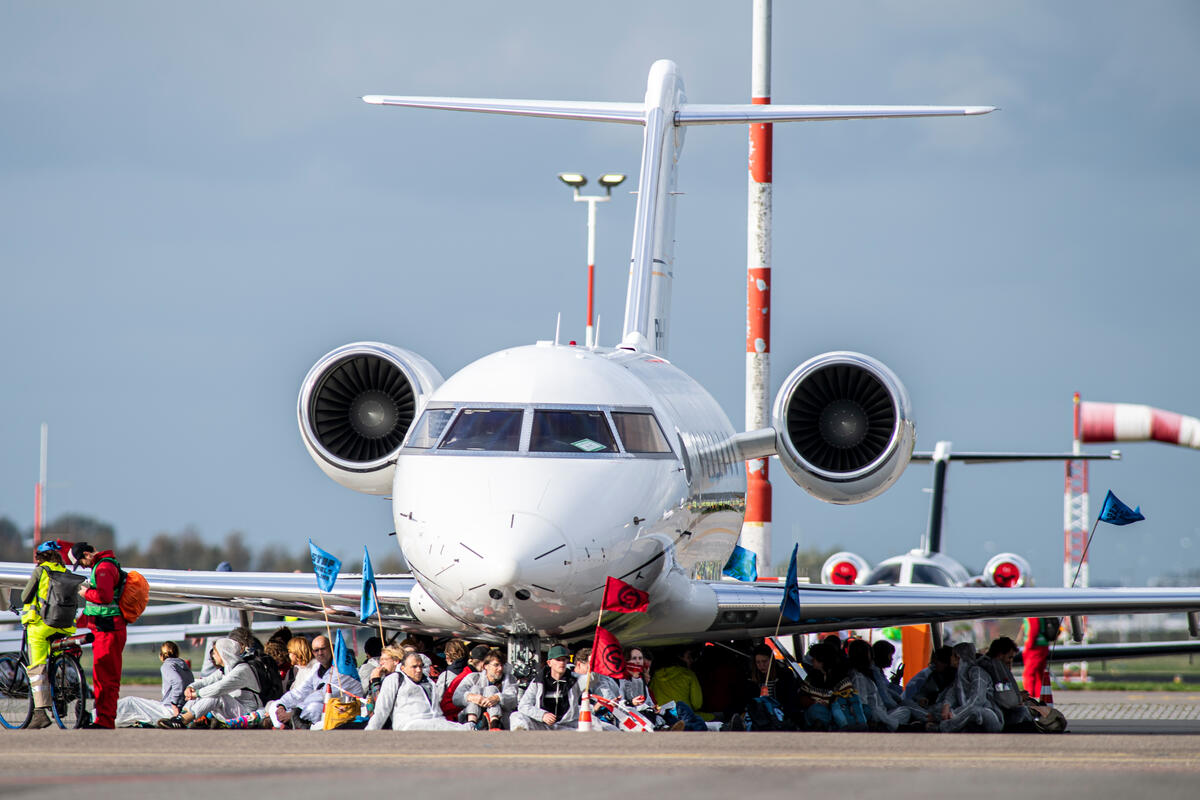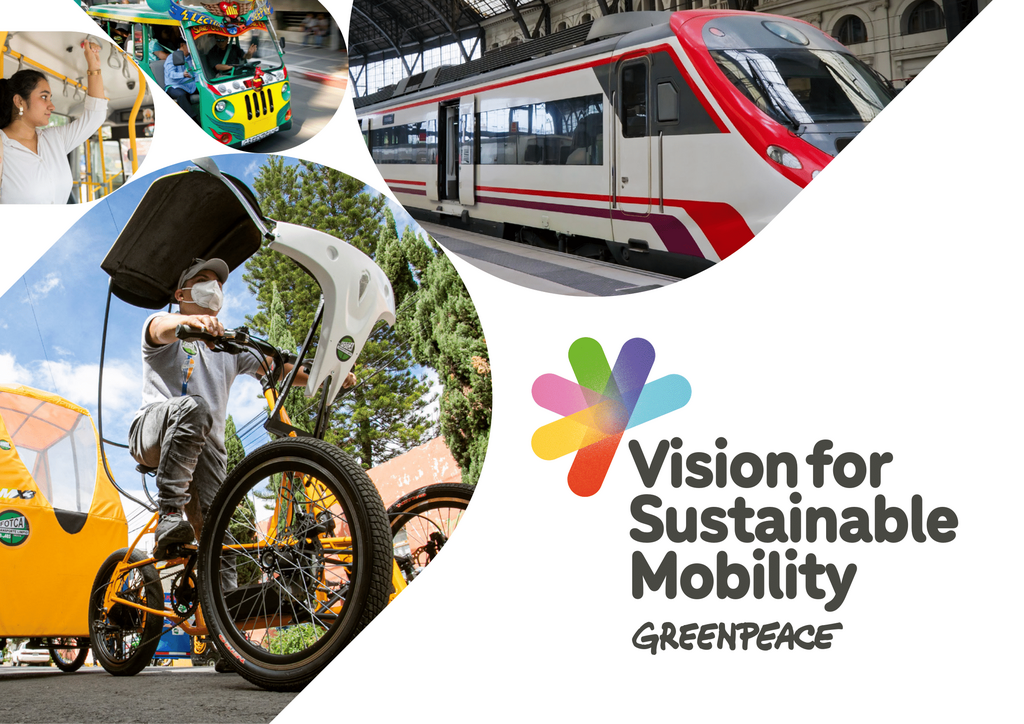In our quest for a green and peaceful future, the way we move – whether to get to school, work or to social activities – plays a pivotal role.
In our new Vision for Sustainable Mobility, we set out the 6 key ingredients that should be at the heart of all our transport systems. These ingredients – affordable, accessible, safe, climate-friendly, connected and socially just – should not only combine to create better, cleaner mobility and more freedom for everyone, but could also pave the way for a transformative shift in the way we think about transport ahead!
1. Affordability: Breaking down financial barriers with low-cost ‘climate tickets’
Transport costs should not be a barrier to mobility. Greenpeace calls for policies that make public transportation affordable for all, particularly low-income individuals and families, who can pay as much as 15% of their household budget on transport in the EU and more in the US.
Governments must make public transport as affordable as possible to create opportunities (e.g. in employment and education) and reduce pressure on household budgets. This should include introducing low-cost ‘climate tickets’ on public transport, which also help take cars off the road and reduce emissions.

2. Accessibility: Bridging the divide with public and active transport systems
Have you ever felt trapped somewhere by a lack of transport options tailored to your needs? Unfortunately, this is a daily occurrence for many communities facing barriers due to inadequate infrastructure and inaccessible vehicles.
Greenpeace advocates for investments in public transportation systems that serve all communities. This includes expanding bus and rail networks, prioritising pedestrian and cycling infrastructure, and ensuring people with disabilities can travel wherever and whenever they need. By making transport accessible to everyone, we can create more equitable societies where no one is left behind.
Governments and transport operators must invest in the accessibility of public and active transport systems in urban and rural areas and between them. This includes improving their reach, frequency and reliability, as well as physical accessibility for those with limited mobility.
3. Safety: Protecting people with safer transport

Every journey should be a safe one.
Yet personal safety on public transport, as well as for walking and cycling, can be a significant barrier particularly for women, LGBTQIA+ and racially minoritised communities. Feeling unsafe can lead to social, professional, economic, and health challenges. For example, it might lead to turning down shift work at certain times of day, avoiding social or work events that require travelling a certain route or choosing to pay more in transport costs (e.g. getting a taxi) to ensure safety. This is why Greenpeace calls on transport operators to ensure the safety of passengers and workers from violence and harassment.
It can make a huge difference when safety measures are prioritised in transportation planning and infrastructure development. Think about the difference between a cycle path separated from the road and trying to cycle amongst motor traffic where you are brushed by buses, taxis and cars…
Sometimes you have to put yourself in the shoes of other road users: have you seen this video showing Mexican bus drivers in training putting themselves in the shoes of the cyclists with whom they share the road? Governments should protect all road users by designing safer roads, introducing segregated bike lanes and protecting pedestrians from traffic.
4. Climate friendly transport systems: no more internal combustion engines, restrictions on SUVs and short-haul flights
Did you know that transport makes up over 60% of oil demand globally and is responsible for a fifth of CO2 emissions? To address this, we urgently need to massively expand public transit systems, and promote active transportation options such as walking and cycling.
We think that the sale of new Internal Combustion Engines vehicles must stop as soon as possible – by 2030 (2028 in the EU), that huge, heavy and highly polluting SUVs should be restricted, and that short haul aviation should be replaced by train travel where viable alternatives exist.
Another key issue for both transport workers and passengers is the need for infrastructure to be safe during extreme weather conditions. Protecting workers means making our transport resilient to the impacts of climate change.

5. Promoting connectivity by reallocating space to sustainable transport infrastructure rather than to private cars
Many communities can be excluded from transport networks. For example in Brazil, research by the Institute for Transportation and Development Policy (ITDP) showed that Black, brown and low-income Brazilians pay higher fares, use more overcrowded buses and trains, and have fewer transport options available to help them reach essential destinations.
Integrated and efficient transport systems keep people connected and make life so much easier. Sometimes it doesn’t take much… A synchronised ticketing system and timetables allows passengers to change between modes of transport quickly and easily. Greenpeace supports measures that optimise traffic flow and enhance connectivity, helping everyone get where they need to go.
We also believe that the disproportionate space taken up by cars in public spaces makes a more connected system harder to achieve. Governments must prioritise public and active transport, for example by reallocating space to sustainable transport infrastructure such as the rail network, bus lanes and cycle paths, over space for private cars.
6. Social Justice: Putting equity first
Transportation policies should prioritise the needs of marginalised communities and address systemic inequalities. There is much to be done, to curb the harmful travel choices of the super rich, ensure people on all incomes can get where they need to go, and ensure greater democracy and inclusion in decision making.
Putting justice at the heart of transport issues means putting an end to the absurd and irresponsible behaviour of an ultra-rich elite who are allowed to travel in private jets and superyachts. How can we convince as many people as possible to embrace change when we allow the most privileged to destroy and pollute with impunity? Governments must ban private jets and other harmful transport modes of the super rich.

By centering social justice in transportation policies, we can build more inclusive and equitable communities where everyone has access to safe, affordable, and sustainable transportation options.
These measures are possible and are already being tried out in many cities and regions around the world, with success.
By implementing these recommendations for accessible, affordable, safe, climate-friendly, connected, and socially just transportation, we can create greener and fairer transport systems for all. Together, let’s steer towards a world where transportation serves the needs of people and the planet, today and for generations to come.

We can fight for, and win, better transport systems.
Read moreGavin Thomson is a transport campaigner with Greenpeace International. Mehdi Leman is a Content Editor for Greenpeace International.



